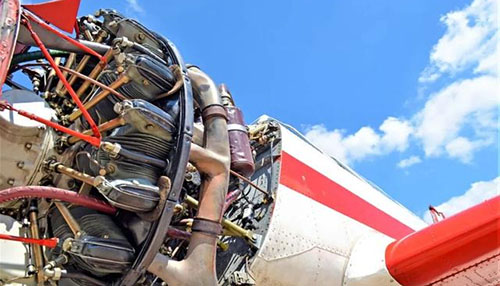Table of Contents
High-temperature resistant fabrics are essential in various industrial applications, providing durability and safety against extreme heat. This article explores different types, applications, and benefits of these specialized materials.
Understanding the properties and uses of high-temperature fabrics can enhance safety and performance in industrial applications.
Types of High-Temperature Resistant Fabrics
1. Fiberglass Fabrics
- Standard Fiberglass: Suitable for temperatures up to 1000°F (550°C). Commonly used in insulation and protective gear.
- High-Performance Fiberglass: Enhanced with various coatings to improve heat resistance and durability, capable of withstanding temperatures up to 1100°F (600°C). Common coating materials include:
- Silicone Coating: Provides excellent thermal stability and flexibility.
- Teflon (PTFE) Coating: Offers superior chemical resistance and non-stick properties, ideal for environments with corrosive materials.
- Vermiculite Coating: Enhances thermal protection and is often used in applications requiring additional insulation.
- Alumina Coating: Increases the temperature resistance and provides additional strength to the fiberglass.
- Polyurethane Coating: Adds a layer of abrasion resistance, making the fabric more durable in rough conditions.
Read more: Fiberglass Fabrics
2. Leached Silica Fabrics
- Capable of withstanding temperatures up to 2000°F (1100°C). These fabrics are often used in applications involving extreme heat, such as foundries and furnaces.
3. Silicone-Fiberglass Fabrics
- Resistant to heat up to 600°F (320°C). Typically used for insulation and protective covers, providing both heat resistance and flexibility.
4. Ceramic Fiber Fabrics
- Withstands temperatures exceeding 2300°F (1260°C). Commonly employed in kilns and furnaces, these fabrics are known for their high thermal resistance and low thermal conductivity.
5. Meta-Aramid Fabrics
- Heat-resistant up to 900°F (482°C) and known for their flame-retardant properties. Widely used in protective clothing for firefighters and industrial workers.
Read more: Meta-Aramid Fabrics Blog
6. PTFE (Teflon) Fabrics
- Can resist temperatures up to 500°F (260°C) and are chemically resistant. Often utilized in cooking applications, such as non-stick bakeware.
7. Zirconia Fabrics
- Extremely high resistance (up to 5000°F/2760°C). Used in specialized applications, including aerospace, where thermal protection is critical.
Applications of High-Temperature Fabrics
High-temperature resistant fabrics are utilized across various industries and applications, including:
Aerospace and Aviation:
- Thermal protection systems for spacecraft.
- Insulation for engine components in aircraft.
- Protective gear for ground crews and maintenance personnel.
- Heat shields for turbine engines.
 Insulation for engine components in aircraft
Insulation for engine components in aircraft
Automotive:
- Fire-resistant suits for racing drivers.
- Insulation for exhaust systems.
- Heat shields for high-performance vehicles.
Energy Production:
- Insulation for pipelines carrying hot fluids in power plants.
- Protective clothing for workers in high-temperature environments.
- Thermal barriers in furnaces and reactors.
Home Appliances:
- Non-stick bakeware using PTFE fabrics.
- Heat-resistant mats for cooking surfaces.
- Insulation for toasters and ovens to enhance safety.
Textiles:
- Fire-resistant clothing for firefighters and industrial workers.
- Heat-resistant curtains and drapes for industrial applications.
Construction:
- Protective coverings for scaffolding in high-heat areas.
- Insulation for roofing materials exposed to high temperatures.
Food Processing:
- Heat-resistant conveyor belts for baking processes.
- Protective covers for high-temperature food production equipment.
Manufacturing:
- Welding blankets to protect workers and equipment from sparks and heat.
- Insulation for high-temperature processing equipment.
- Protective covers for machinery in heat-intensive environments.
Benefits of Using High-Temperature Resistant Fabrics
- Durability: These fabrics are designed to withstand extreme temperatures without degrading, ensuring longevity in demanding environments.
- Safety: High-temperature resistant fabrics reduce the risk of burns and other heat-related injuries in industrial settings.
- Efficiency: By minimizing heat loss in systems, these fabrics contribute to energy efficiency and cost savings.
Case Studies of High-Temperature Fabric Use
- Aerospace and Aviation: Ceramic fiber fabrics are utilized in thermal protection systems for spacecraft, enabling safe operation during re-entry when temperatures soar.
- Automotive Sector: Meta-aramid fabrics are employed in fire-resistant suits for racing drivers, providing vital protection in high-heat situations.
- Manufacturing and Welding: Silicone-fiberglass fabrics serve as welding blankets, protecting workers and equipment from heat and sparks during fabrication processes.
- Home Appliances: PTFE fabrics are used in high-temperature cooking applications, ensuring safe and efficient performance under heat.
- Industrial Insulation: Leached silica fabrics are commonly used as insulation in high-temperature piping systems to prevent heat loss, enhancing energy efficiency.
Summary
High-temperature resistant fabrics are crucial for various industrial applications, ensuring safety and efficiency in operations. For specific needs, consider the fabric types that best suit your requirements.